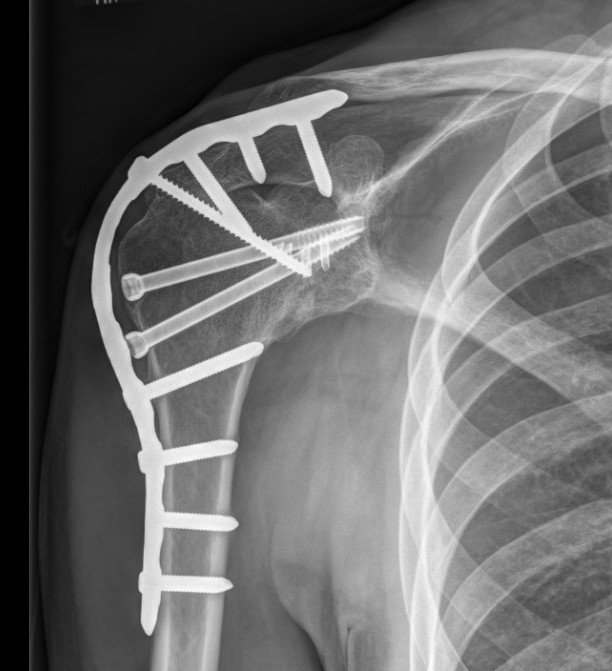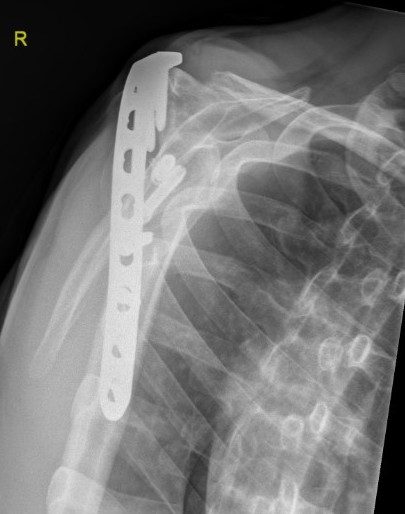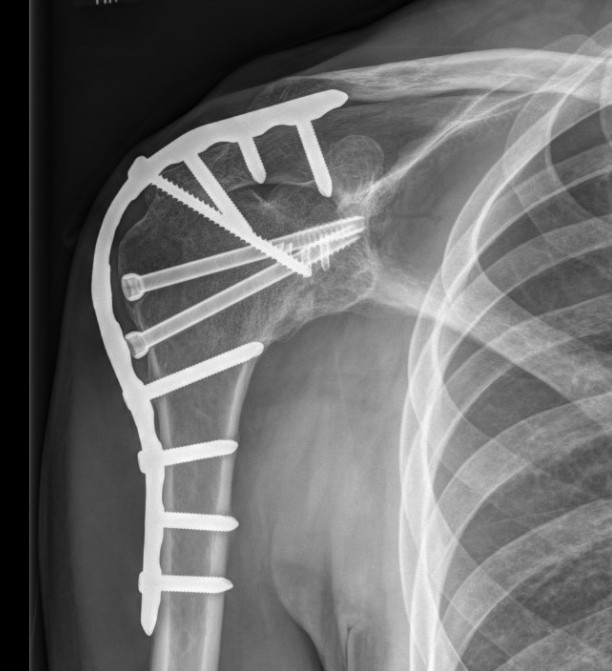

Indications
Indications have narrowed due to the success of shoulder arthroplasty
1. Chronic infection
2. Obstetric brachial plexus injury
3. Post-traumatic brachial plexus injury
4. Salvage of failed GHJ arthroplasty
5. Arthritic diseases unsuitable for arthroplasty / young patient
6. Tumour resection
7. Instability in epilepsy patients / severe MDI
Contra-Indications
Ipsilateral elbow fusion
Contralateral shoulder arthrodesis
Paralysis of scapula-stabilisers - necessary for function following arthrodesis
Charcot arthropathy (low chance union)
Advantages
Permanent solution
Disadvantages
Loss of movement at shoulder
Difficulty with activities
- at head level or behind the back
- perineal care
Goals
1. Hand should reach
- mouth
- waist
- belt buckle
- back pocket
2. Shoulder be comfortable at rest / scapula should not be prominent
- arm should hang by side with scapula flat against thorax
- no winging
Position
Ideal
- abduction 10-15°
- flexion 10-15°
- internal rotation 45°
Issues
1. Technically difficult to obtain correct position intra-operatively
2. Internal rotation most important to later function
3. Position in reference to trunk not scapula
4. Avoid excessive abduction & flexion
- forces the scapula to rotate & wing at rest
- leads to fatigue & discomfort
Options
Intra-articular - glenohumeral compression screws +/- acromiohumeral screws
Extra-articular - plate along spine of scapula / acromion and lateral humerus
Combined
Open Technique


Technique
Vumedi open arthrodesis surgical technique video
Approach
- midline incision over spine / acromion / down to deltoid tuberosity
- posterior approach - detach deltoid from spine, interval between IS and TM
- anterior approach - detach deltoid from clavicle
- protect axillary nerve
Preparation
- resect rotator interval
- denude GHJ cartilage
- denude superior humeral head and undersurface acromion
- temporarily fix with steinman pins GHJ and acromio-humeral
- check position / ROM / no winging
- nsert GHJ and acromial-humeral compression screws
- supplement with pelvic reconstruction 12 - 14 hole plate scapular spine / acromion / humerus
- bone graft
- careful deltoid repair in case of future conversion to reverse TSR
- spica / shoulder abduction sling
Arthroscopic Technique
Complications
Nonunion
Infection
Fracture of humerus below fusion
Prominent hardware
Results
Brachial plexus injury
Atlan et al. J Hand Surg Am 2012
- 54 patients with brachial plexus palsy
- fusion rate 76% after one procedure
- 94% after second operation
- abduction 45 degrees in 75% patients
- rotation 45 degrees in 65% patients
Epilepsy
Thangarajah et al. J Bone Joint 2014
- 6 patients with epilepsy and chronic instability
- all cases achieved union and prevented instability
Failed total shoulder replacement
- 7 patients
- 4/7 required additional procedures to obtain union
- 2/7 persistent non-union
- extremely challenging
Conversion to Reverse TSR
- takedown of 4 patients with scapula pain
- EMG evidence of deltoid function
- some improvements in pain and ROM
